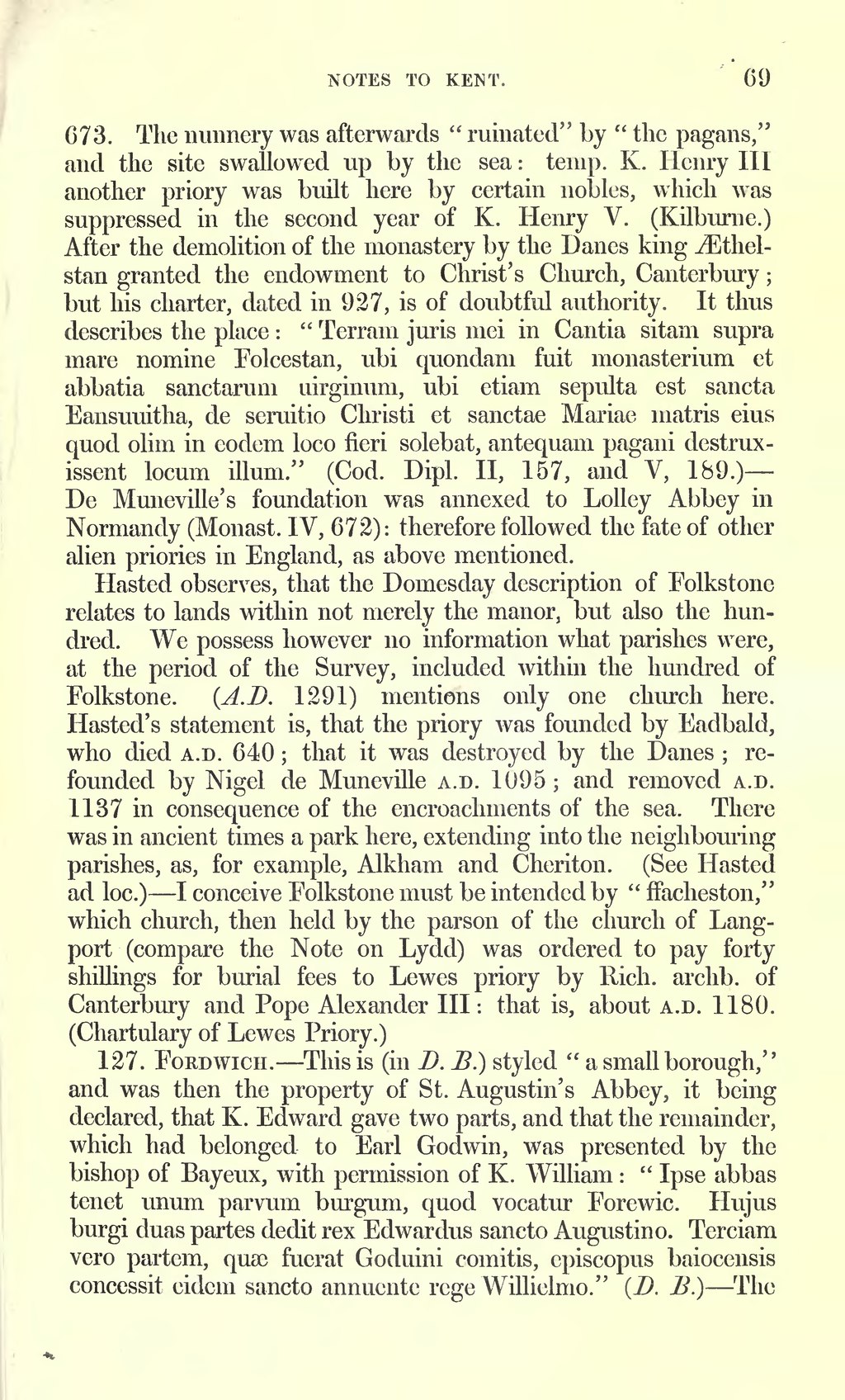673. The nunnery was afterwards "ruinated" by " the pagans," and the site swallowed up by the sea: temp. K. Henry III another priory was built here by certain nobles, which was suppressed in the second year of K. Henry V. (Kilburne.) After the demolition of the monastery by the Danes king Æthelstan granted the endowment to Christ's Church, Canterbury; but his charter, dated in 927, is of doubtful authority. It thus describes the place: " Terrain juris mei in Cantia sitam supra mare nomine Folcestan, ubi quondam fuit monasterium et abbatia sanctarum uirginum, ubi etiam sepulta est sancta Eansuuitha, de seruitio Christi et sanctae Mariae matris eius quod olim in eodem loco fieri solebat, antequam pagani destruxissent locum ilium." (Cod. Dipl. II, 157, and V, 189.) — De Muneville's foundation was annexed to Lolley Abbey in Normandy (Monast. IV, 672): therefore followed the fate of other alien priories in England, as above mentioned.
Hasted observes, that the Domesday description of Folkstone relates to lands within not merely the manor, but also the hundred. We possess however no information what parishes were, at the period of the Survey, included within the hundred of Folkstone. (A.D. 1291) mentions only one church here. Hasted's statement is, that the priory was founded by Eadbald, who died A.D. 640; that it was destroyed by the Danes; refounded by Nigel de Muneville A.D. 1095; and removed A.D. 1137 in consequence of the encroachments of the sea. There was in ancient times a park here, extending into the neighbouring parishes, as, for example, Alkham and Cheriton. (See Hasted ad loc.) —I conceive Folkstone must be intended by "ffacheston," which church, then held by the parson of the church of Langport (compare the Note on Lydd) was ordered to pay forty shillings for burial fees to Lewes priory by Rich, archb. of Canterbury and Pope Alexander III: that is, about A.D. 1180. (Chartulary of Lewes Priory.)
127. Fordwich.—This is (in D. B.) styled "a small borough," and was then the property of St. Augustin's Abbey, it being declared, that K. Edward gave two parts, and that the remainder, which had belonged to Earl Godwin, was presented by the bishop of Bayeux, with permission of K. William: "Ipse abbas tenet unum parvum burgum, quod vocatur Forewic. Hujus burgi duas partes dedit rex Edwardus sancto Augustino. Terciam vero partem, quæ fuerat Goduini comitis, episcopus baiocensis concessit eidcm sancto annuente rege Willielmo." (D. B.)—The
